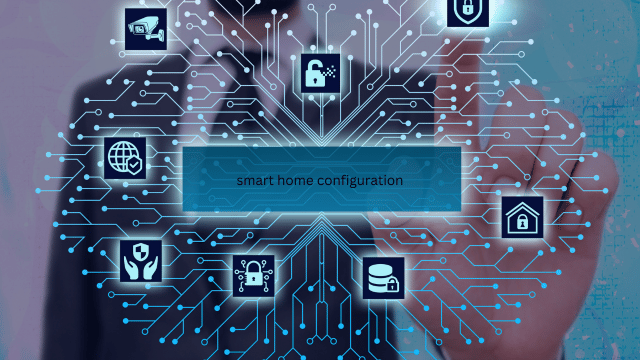The smart home revolution is upon us, and the potential it holds is truly remarkable. By integrating a network of interconnected devices, sensors, and automation systems, we can unlock a world of convenience, energy savings, and enhanced security. However, the path to a fully realized smart home can seem daunting to some. In this comprehensive guide, I’ll walk you through the essential steps to successfully configure your smart home, ensuring you can harness the full potential of this transformative technology.
Understanding the Basics of a Smart Home
At the core of a smart home lies a fundamental understanding of how various devices and systems work together to create a seamless, intelligent living environment. From smart lights and thermostats to security cameras and voice assistants, each component plays a crucial role in the overall smart home ecosystem. By familiarizing yourself with the basic principles and capabilities of these technologies, you’ll be better equipped to make informed decisions during the configuration process.
Benefits of Smart Home Configuration
The benefits of a well-configured smart home are numerous and far-reaching. Energy efficiency, improved home security, enhanced convenience, and even better health and wellness are just a few of the advantages that can be realized. As you delve into the world of smart home configuration, you’ll discover how these technologies can streamline your daily routines, reduce your carbon footprint, and provide an unparalleled level of control and customization within your living space.
Step-by-Step Guide to Setting Up a Smart Home
- Connecting and Integrating Smart Home Devices:
- Establish a reliable home network: Ensure your Wi-Fi network is robust and capable of supporting multiple connected devices.
- Follow the manufacturer’s instructions for device setup and integration: Properly configure each smart home component to ensure optimal performance.
- Utilize smart home hubs or platforms: Leverage centralized control systems to manage and coordinate your connected devices.
- Configuring Smart Home Automation:
- Automate your routines and schedules: Set up automated actions based on time, location, or specific triggers.
- Customize voice commands and smart home assistants: Tailor the interaction with your smart home to your preferences.
- Explore advanced features like geofencing and IFTTT (If This Then That) integration: Unlock the full potential of your smart home’s automation capabilities.
- Troubleshooting Common Smart Home Configuration Issues:
- Identify and resolve connectivity problems: Troubleshoot network issues, device compatibility, and software updates.
- Optimize device placement and performance: Ensure proper signal strength and minimize interference for reliable smart home functionality.
- Seek support from manufacturers or online communities: Leverage available resources to address any configuration challenges you may encounter.
- Smart Home Security and Privacy Considerations:
- Prioritize data privacy and security: Understand and implement best practices for protecting your smart home network and connected devices.
- Manage access and user permissions: Establish appropriate levels of control and visibility for household members and guests.
- Stay informed about emerging security threats and software updates: Maintain the security of your smart home ecosystem.
- Future Trends in Smart Home Configuration:
- Explore the integration of emerging technologies: Keep an eye on advancements in areas like artificial intelligence, 5G connectivity, and the Internet of Things (IoT).
- Anticipate the evolution of smart home platforms and ecosystems: Understand how the smart home landscape may change in the years to come.
- Prepare for the increasing role of sustainability and energy efficiency: Discover how smart home technologies can contribute to a more eco-friendly future.
- Assess your needs and priorities: Consider factors such as energy efficiency, security, convenience, and lifestyle preferences.
- Research and compare various smart home devices: Evaluate features, compatibility, and user reviews to make informed decisions.
- Develop a cohesive smart home ecosystem: Ensure that the devices you select can seamlessly integrate with one another for maximum functionality.
Ready to transform your living space into a cutting-edge smart home? Contact our team of experts today to schedule a consultation and take the first step towards a more convenient, secure, and energy-efficient future. Together, we’ll design a personalized smart home solution that perfectly aligns with your unique needs and preferences.
Conclusion
As you embark on your smart home configuration journey, remember that the key to success lies in understanding the fundamentals, making informed decisions, and embracing the ever-evolving nature of this technology. By following the step-by-step guide outlined in this article, you’ll be well on your way to creating a truly intelligent and personalized living environment. Embrace the future of smart home living and unlock a world of convenience, energy savings, and enhanced security. Let’s get started on your smart home transformation today!












